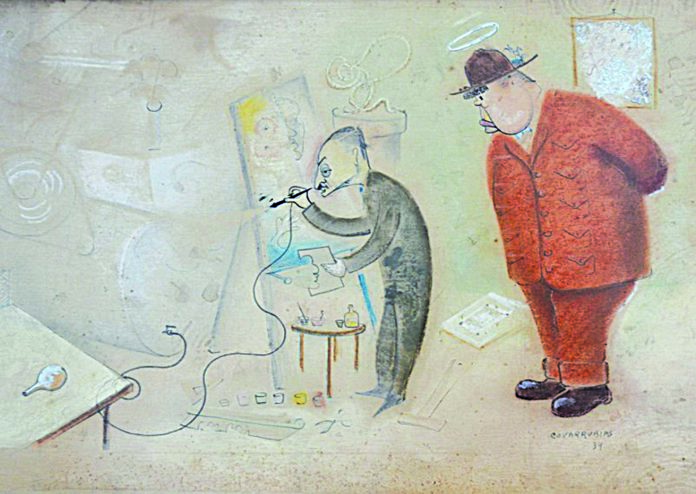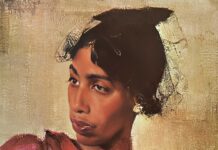Fine art drawings on view now: Throckmorton Fine Art (New York) presents “Miguel Covarrubias: A Retrospective.” Covarrubias (1904–1957) was a Mexican illustrator, writer, and anthropologist.
In Miguel Covarrubias’s hands caricature became a cosmopolitan artform and appeared worldwide in prestigious publications ranging from Vanity Fair, Vogue, Harper’s Bazaar, and The New Yorker to Fortune magazine. During the 1920s and 1930s more than 300 Covarrubias caricatures of influential artists and politicians were featured on the covers of influential publications including The New Yorker and Vanity Fair.
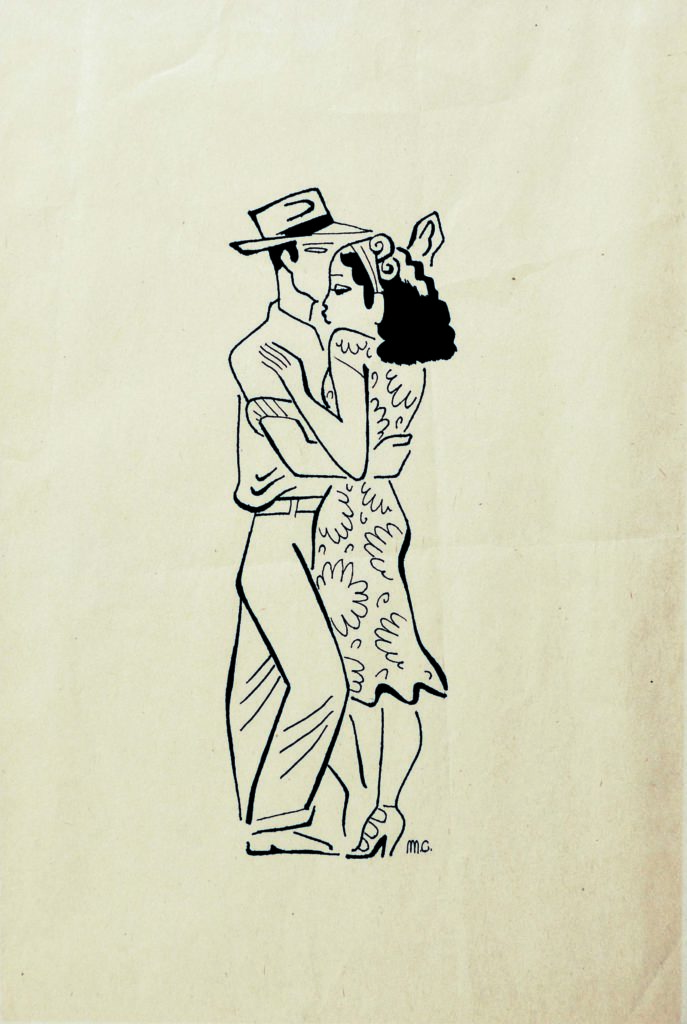
But caricature was just one expression of Covarrubias’s genius. He achieved acclaim in popular arts, fine art, photography, ethnography, archeology, anthropology, and dance. His contributions to the cultural oeuvre range from a fascination with the Harlem renaissance and the history of Latino artists living in the United States, to an immersion in the cultural life of Bali.
While his career started in Mexico, where as a teenager his work first appeared in El Heraldo, Ed Mundo and the Universal Ilustrado, he later chose to spend time in New York, Paris, Germany, Japan, Indochina, and Bali. He was witness to Mexico’s effervescent cultural rebirth after the Revolution and was a friend of leading arts talents, among them Diego Rivera and the poet Jose Juan Tablada.
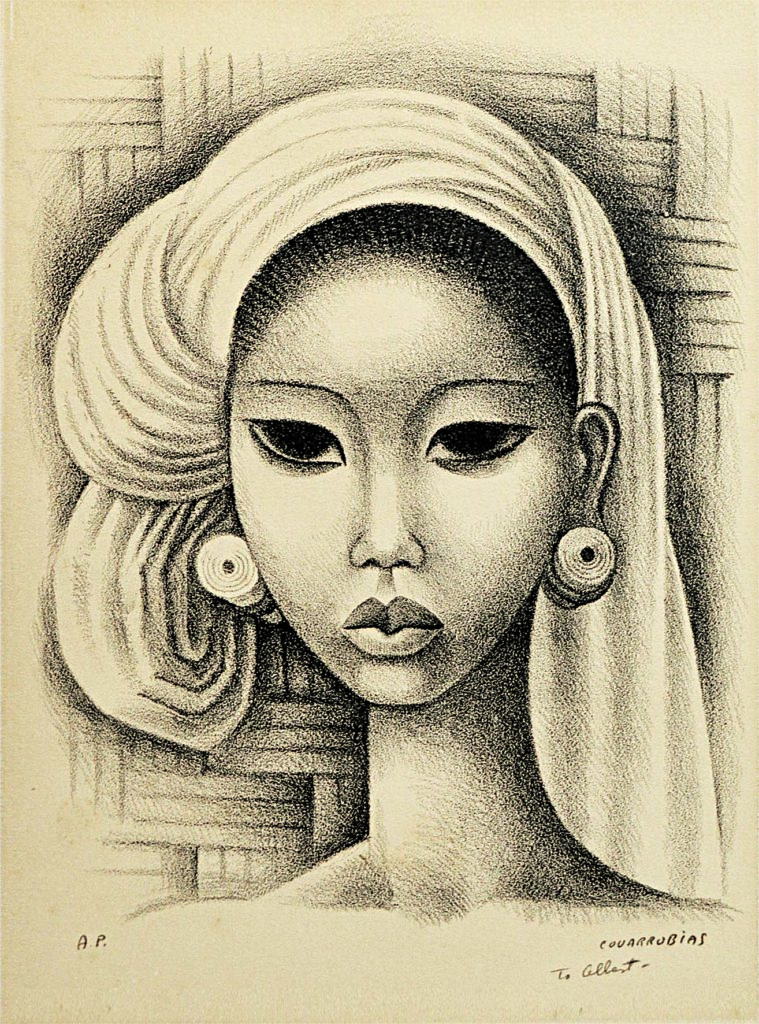
Later, he and his wife, the dancer Rosa Rolanda, a close friend of Frida Kahlo, would entertain international figures including Georgia O’Keeffe, Orson Welles, Merce Cunningham, Luis Bunuel, John Huston, Amelia Earhart, Nelson Rockefeller, and Henri Cartier-Bresson at their Mexico City residence. Rosa and Miguel also traveled with Tina Modotti and Edward Weston, who taught Rosa photography.
Covarrubias was born in Mexico City to an upper middle-class family. His father was a civil engineer who held various prominent positions in the government, and his mother was from a family that included Spanish aristocracy. When his caricatures were first published in 1920, they drew attention from an artistic circle that led to a meeting with New York Times critic Carl Van Vechten who introduced Covarrubias to Vanity Fair, which published his work in 1924.
His first book, The Prince of Wales and Other Famous Americans was published in 1925. Covarrubias also illustrated Langston Hughes’s book The Weary Blues, and An Anthology of the Blues by W. C. Handy in the 1920s. Later his illustrations appeared in books by John Huston and Zora Neale Hurston and in Herman Melville’s Typee, as well as Harriet Beecher Stowe’s Uncle Tom’s Cabin.

Adriana Williams, author of the 1994 Covarrubias biography (University of Texas Press) that helped bring new recognition to the artist, has said, “In his case drawing is an essential weapon of the intellect that allows for the assimilation of the complexities of current events, and also the paradoxes of history.
Thus, we often find in some of Miguel Covarrubias drawings not only very thorough field research, but also humor and irony.” Many of the artworks in this exhibition come from the Adriana and Tom Williams Collection of Miguel Covarrubias. Covarrubias works have been featured in numerous museums and galleries, including the National Portrait Gallery (1985) in Washington and the Centro Cultural Arte Contemporaneo (1987) in Mexico City.
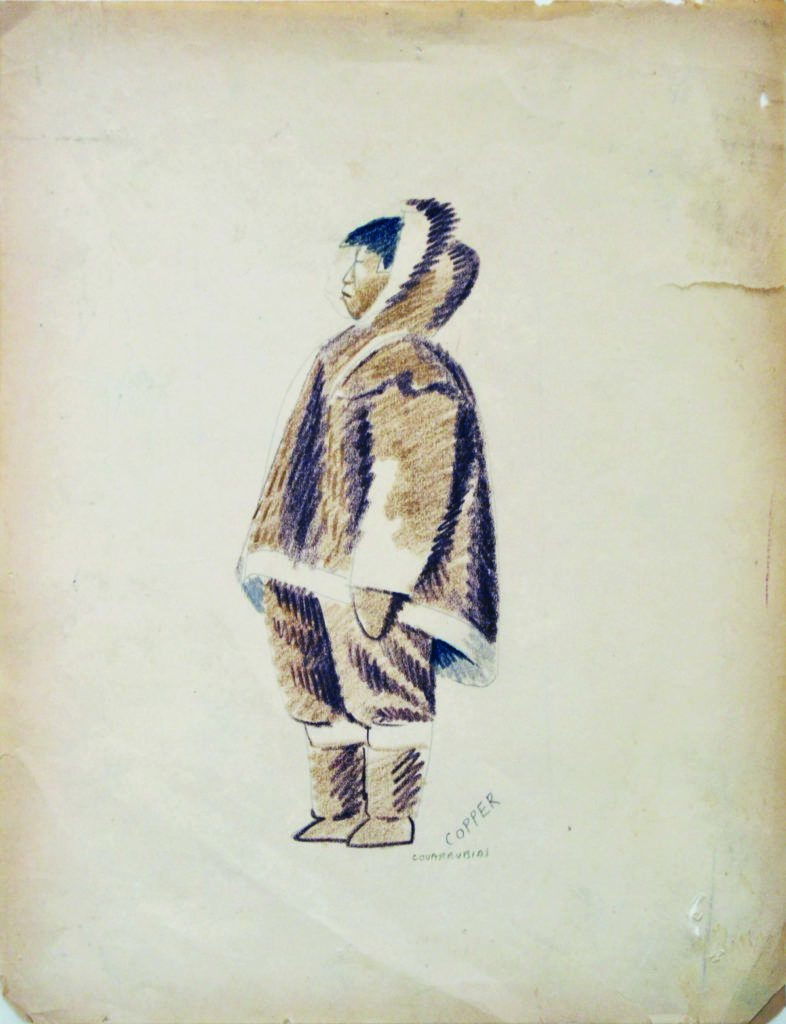
Pablo Goebel mounted El Chamaco Covarrubias last year in his Mexico City gallery. He has said that the artist possessed “an assurance, a sensuous even melancholy desire to depict with character what he is viewing, seeing, recording. The direct synthesis of his characters and their environment is exceptional and delightful.
Miguel Covarrubias drew with an immediacy that for most of us is reserved for daydreaming. His linear control is absolute, his works make up a theatre of characters, some familiar and some not so. He did for anthropology and archeology what they could not do for themselves in that he was able to draw a registrar of that which was being unearthed. He had a refined eye for space, almost as discerning as an architect’s.”
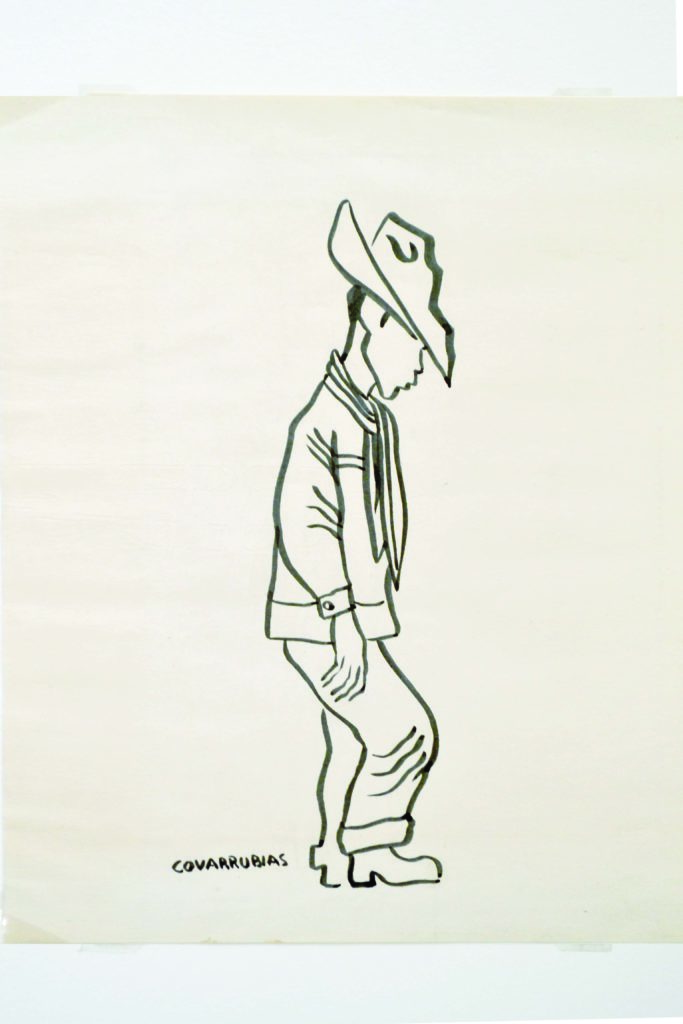
In the 1930s, Covarrubias became interested in indigenous cultures, in Mexico in particular, and he began writing a book for Knopf, Mexico South: Isthmus of Tehuantepec as well as creating pictorial maps for the 1939 Golden Gate International Exposition. He also undertook six murals, Pageant of the Pacific, mapping the countries of the Pacific Rim. Covarrubias focused on the peoples, fauna and flora, art forms, economy, native dwellings, and native means of transportation. These were later exhibited at the American Museum of Natural History in New York and until 2001 five of the murals were on view at San Francisco’s Ferry Building.
In the 1940s, he branched out to include museum work and dance production, and he received the first museology teaching appointment in Mexico and taught anthropology and art history courses at the Museo Nacional de Antropologia. He also mounted 34 ballets for the Instituto Nacional de Bellas Artes and was director of the dance academy there.
Rosa and Miguel Covarrubias visited Bali on their honeymoon in 1930 using the money from a National Art Directors Medal he had won. They returned there in 1933 when Miguel was a Guggenheim Fellow. His book Island of Bali included photographs taken by Rosa and contributed to the 1930s Bali craze in New York.
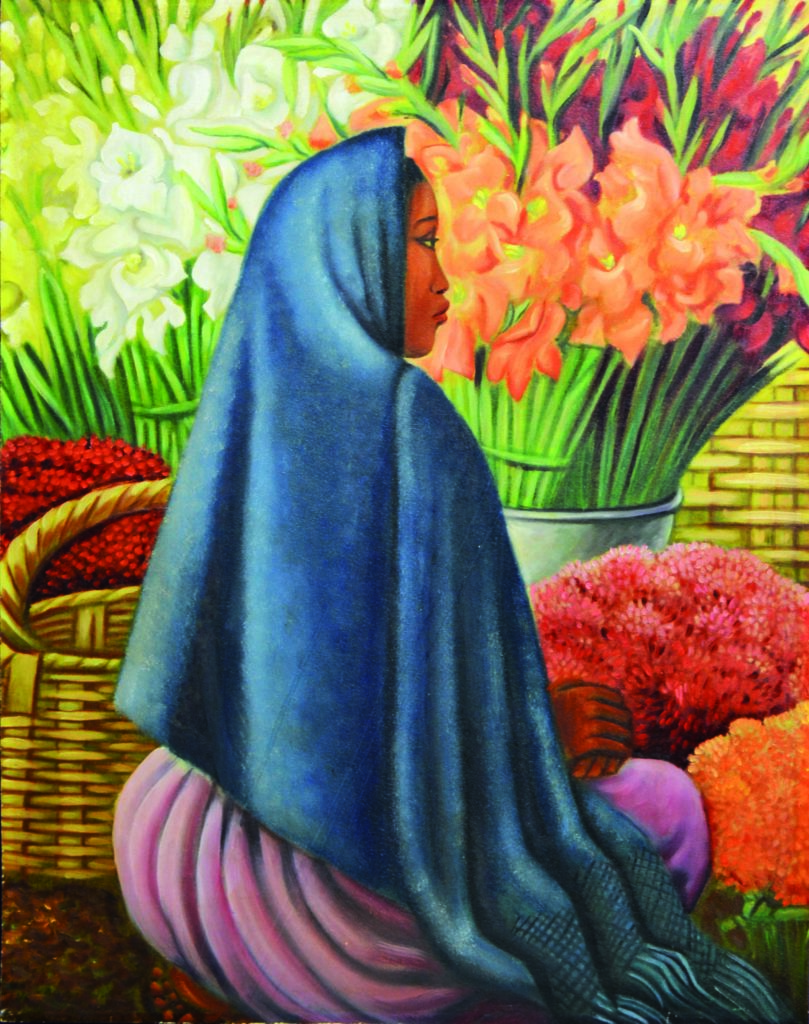
This Throckmorton Fine Art exhibition includes a wide range of Covarrubias’s work that not only shows his power of synthesis — his ability to evoke the feeling, character, and the movement of such a broad mix of subjects — but also reflects the far-flung interests and intellectual curiosity Covarrubias brought to his work.
Among Covarrubias’s illustrations on view is:
- a series of female nudes dating to the 1930s
- portraits of women from Bali
- a Mexican Pueblo Scene
- a Kneeling Figure with Chickens
- a Caregiver
- a caricature of Rosa and Miguel
- Apache Dancers
- a portrait of a Filipino woman
- Filipino Figures in front of a Cabin
- a Filipino Figure with Machete
- numerous faces
- a Man with Cigar
- a study of a woman with glasses
- another of a Harlem Renaissance face
- smiling men and women
- reclining nudes
- a Portrait of a Woman, Musicians and Dancers
- a Woman on the Phone
- a Typee Girl with a Kava Bowl and a Flower Vendor
“Miguel Covarrubias: A Retrospective” is on view at Throckmorton Fine Art (New York) through February 23, 2019.
Sign up to receive Fine Art Today, the free weekly e-newsletter from
Fine Art Connoisseur magazine.

